
- •Table of contents
- •Abbreviations and Acronyms
- •Executive summary
- •Introduction
- •Institutional arrangements for tax administration
- •Key points
- •Introduction
- •The revenue body as an institution
- •The extent of revenue body autonomy
- •Scope of responsibilities of the revenue body
- •Special governance arrangements
- •Special institutional arrangements for dealing with taxpayers’ complaints
- •Bibliography
- •The organisation of revenue bodies
- •Getting organised to collect taxes
- •Office networks for tax administration
- •Large taxpayer operations
- •Managing the tax affairs of high net worth individuals taxpayers
- •Bibliography
- •Selected aspects of strategic management
- •Key points and observations
- •Managing for improved performance
- •Reporting revenue body performance
- •Summary observations
- •Managing and improving taxpayers’ compliance
- •Bibliography
- •Human resource management and tax administration
- •Key points
- •Aspects of HRM Strategy
- •Changes in policy in aspects of HRM within revenue bodies
- •Staff metrics: Staff numbers and attrition, age profiles and qualifications
- •Resources of national revenue bodies
- •Key points and observations
- •The resources of national revenue bodies
- •Impacts of recent Government decisions on revenue bodies’ budgets
- •Overall tax administration expenditure
- •Measures of relative costs of administration
- •International comparisons of administrative expenditure and staffing
- •Bibliography
- •Operational performance of revenue bodies
- •Key points and observations
- •Tax revenue collections
- •Refunds of taxes
- •Taxpayer service delivery
- •Are you being served? Revenue bodies’ use of service delivery standards
- •Tax verification activities
- •Tax disputes
- •Tax debts and their collection
- •Bibliography
- •The use of electronic services in tax administration
- •Key points
- •Provision and use of modern electronic services
- •Bibliography
- •Tax administration and tax intermediaries
- •Introduction
- •The population and work volumes of tax intermediaries
- •Regulation of tax intermediaries
- •The services and support provided to tax intermediaries
- •Bibliography
- •Legislated administrative frameworks for tax administration
- •Key findings and observations
- •Introduction
- •Taxpayers’ rights and charters
- •Access to tax rulings
- •Taxpayer registration
- •Collection and assessment of taxes
- •Administrative review
- •Enforced collection of unpaid taxes
- •Information and access powers
- •Tax offences (including policies for voluntary disclosures)
- •Bibliography

7. THE USE OF ELECTRONIC SERVICES IN TAX ADMINISTRATION – 233
Chapter 7
The use of electronic services in tax administration
This chapter provides an overview of the electronic services generally offered by revenue bodies to their clients and summary data on their usage.
TAX ADMINISTRATION 2013: COMPARATIVE INFORMATION ON OECD AND OTHER ADVANCED AND EMERGING ECONOMIES – © OECD 2013

234 – 7. THE USE OF ELECTRONIC SERVICES IN TAX ADMINISTRATION
Key points
Electronic filing of tax returns
The availability of a modern suite of e-filing services for the major taxes administered is just about universal, with well over 90% of revenue bodies offering such a service.
For both the PIT and VAT, just over half over half of revenue bodies achieved e-filing usage by the majority of their client taxpayers in 2011; for the CIT, around 60% achieved usage by the majority of their client taxpayers in 2011.
A number of revenue bodies can point to substantial increases in e-filing usage over the last six years, as a result of administrative initiatives and/or the introduction of mandatory e-filing requirements.
Despite the progress made, there is potential for substantially greater usage (i.e. +75%) by fair number of revenue bodies-14 for the PIT, 10 for the CIT, and 8 for VAT.
The provision of prefilled tax returns to taxpayers
Pre-filling has evolved to become a significant (and for some, transformational) element of revenue bodies’ e-services strategy, particularly for the PIT, with almost half of revenue bodies reporting some use of such a service.
In its most advanced form, pre-filling services and related facilities have just about fully automated return preparation and assessment; some seven revenue bodies reported having the capability to prepare fully completed tax returns for the majority of their PIT clients.
Automation of tax payments
Revenue bodies appear to be making reasonable progress in fully automating tax payment collection, although a surprising number (21) of revenue bodies do not appear to have adequate payment data pointing to the use of different payment methods, while almost half still provide relatively costly on-site payment services for taxpayers.
For those revenue bodies providing data, only twelve reported that the majority of tax payments are made by fully automated methods, as defined for this series; eight revenue bodies (mainly countries in Europe) reported use of such methods exceeded 75%.
There appears to be potential for substantially greater use of fully electronic e-payment capabilities by many surveyed revenue bodies.
Other electronic services
Just over half of revenue bodies reported offering the full suite of other services identified for the survey-Internet access to a comprehensive set of tax information; online access to personal taxpayer information; electronic communications with taxpayers; remote access by staff to business systems, and an online legal and case law database.
Around half of revenue bodies reported some experience with the use of social media technologies in their dealings with taxpayers, although a 2011 FTA study suggests this is on a very small scale.
TAX ADMINISTRATION 2013: COMPARATIVE INFORMATION ON OECD AND OTHER ADVANCED AND EMERGING ECONOMIES – © OECD 2013

7. THE USE OF ELECTRONIC SERVICES IN TAX ADMINISTRATION – 235
Provision and use of modern electronic services
Over the last two decades, many revenue bodies have taken steps to exploit the use of modern computing technologies to transform their operations, in particular those concerned with tax collection and assessment processes and the provision of basic services to taxpayers and their representatives. The reasons for this are fairly obvious: applied effectively, these technologies can deliver enormous benefits (e.g. lower administrative costs, faster and more accessible services for taxpayers and tax professionals) both to Governments and taxpayers.
The main types of electronic services now offered by most revenue bodies include:
Provision of a comprehensive range of tax and other information, forms and calculators;Electronic filing of tax returns;
Fully and/or partially completed pre-filled tax returns;
A mix of electronic payment facilities for all taxes (e.g. direct online payment);Access to personal taxpayer information via online taxpayer portals; and
Call centres using modern telephony facilities (including IVR technologies) to provide more accessible phone inquiry services.
Recent work carried out by the FTA (OECD, 2011) has also revealed that some revenue bodies have started to use social media technologies (e.g. Twitter, YouTube and Facebook) in their day-to-day operations, albeit on a relatively small scale as they seek to better understand how these technologies can be deployed productively to facilitate their administration.
For this series, revenue bodies were asked to provide a limited range of information on the nature of the electronic services offered by them and, for the more common services, data related to the scale of their usage/take-up. (For a more comprehensive assessment of the use of modern electronic services by OECD revenue bodies, the OECD FTA study –
Survey of Trends and Developments in the Use of Electronic Services for Taxpayer Service Delivery – may be helpful.)
Electronic filing of tax returns (“e-filing”)
Previous editions of CIS have given a fair deal of attention to the automation of tax return filing arrangements for the major taxes given their potential to deliver significant benefits to both revenue bodies and taxpayers. Both the 2008 and 2010 CIS reports noted that that there had been substantial progress in recent years in the number of revenue bodies offering e-filing capabilities for their major taxes. However, they also noted that there were significant variations across both revenue bodies and the major taxes administered in terms of the level of take-up being achieved, resulting in considerable unevenness in the benefits being derived across countries. In the main, most progress had been made with e-filing for the personal income tax (PIT). Also apparent was the fact that an increasing number of revenue bodies had introduced mandatory e-filing requirements on some/all businesses to achieve major progress over a relatively short time frame. For this edition of CIS, the survey sought to determine what progress had been made with electronic filing for the major taxes. Drawing on the information in Tables 7.1, 7.2 and 7.3, the key findings are as follows:
Personal income tax
The provision of e-filing services for personal taxpayers is now just about universal across the countries surveyed, with all countries where the national revenue body administers a PIT reporting the availability of this service for fiscal year 2011.
TAX ADMINISTRATION 2013: COMPARATIVE INFORMATION ON OECD AND OTHER ADVANCED AND EMERGING ECONOMIES – © OECD 2013

236 – 7. THE USE OF ELECTRONIC SERVICES IN TAX ADMINISTRATION
Just over half of revenue bodies reported that the majority of their personal taxpayers used e-filing (either by themselves or via tax professionals) for the 2011 year:
-22 of 50 achieved usage in excess of 75% of all returns filed;
-7 of 50 achieved usage rates between 50-75%;
-5 of 50 revenue bodies achieved usage rates between 25-50%;
-15 of 5 achieved usage rates less than 25%; and
-For 3 countries relevant data were not available.
A number of countries have made very substantial progress (i.e. +60% in absolute terms) over the last eight years in increasing their e-filing usage-Argentina (+82%), Lithuania (+73%), Slovenia (+77%), South Africa (+95%), Turkey (+69%), and United Kingdom (+60%); in addition to administrative initiatives (including incentives such as extended return filing periods), increased usage in some of these countries has been achieved with the introduction of mandatory e-filing requirements.
Generally, most revenue bodies have not relied on the use of mandated e-filing requirements, and only 13 revenue bodies reported the use of such a requirement for some/all of their taxpayers for the 2011 fiscal year.
There is potential for substantially greater use of e-filing (i.e. +75% in absolute terms) in over 25% of countries surveyed.
Corporate income tax
The provision of e-filing services is now just about universal across the countries surveyed (with 48 of 52 surveyed revenue bodies reporting the availability of this service for fiscal year 2011);
Just over half of surveyed revenue bodies reported that returns for the majority of their corporate taxpayers were e-filed for the 2011 fiscal year:
-Twenty one of forty eight achieved usage in excess of 75%;
-Seven of forty eight achieved usage rates between 50-75%;
-Nine of forty eight achieved usage rates between 25-50%;
-Twelve of forty eight achieved usage rates less than 25%; and
-For four countries relevant data were not available.
A number of revenue bodies have made very substantial progress (i.e. +60% in absolute terms) over the last eight years in increasing their e-filing usage-Argentina (+66%), Estonia (+98%), Hungary (+96%), Ireland (+78%), Latvia (+75%), Netherlands (+100%), Slovenia (100%), South Africa (94%) and Spain (+76%); in addition to administrative initiatives, increased usage in some of these countries has resulted from the introduction of mandatory e-filing requirements.
Compared with the PIT, there is a greater tendency to rely on the use of mandated e-filing requirements, and 22 revenue bodies reported the use of such a requirement for some/all of their taxpayers for the 2011 fiscal year – see examples:
-Canada: For tax years after 2009, all corporations who have gross revenues in excess of USD 1 million are required to internet file their corporate tax return with the exception of; insurance corporations, non-resident corporations, corporations reporting in functional currency, and corporations that are exempt from tax payable under section 149 of the Income Tax Act. (Source: CRA website.)
TAX ADMINISTRATION 2013: COMPARATIVE INFORMATION ON OECD AND OTHER ADVANCED AND EMERGING ECONOMIES – © OECD 2013

7.THE USE OF ELECTRONIC SERVICES IN TAX ADMINISTRATION – 237
-Ireland: All returns/payments due on or after 1 June 2011 must be made by companies on-line through the Revenue On-Line Service (ROS). (NB: Revenue may exclude a company from it’s obligation to pay and file electronically, if Revenue is satisfied that the company does not have the “capacity” to do so.) (Source: Revenue’s website.)
There is potential for substantially greater use of e-filing (i.e. +75% in absolute terms) in around 25% of surveyed countries.
Value added tax (VAT)
The provision of e-filing services in those countries administering a VAT is now just about universal with 43 of 46 surveyed revenue bodies reporting the availability of this service for fiscal year 2011.
There has been a considerable increase in the proportion of surveyed revenue bodies reporting that the majority of VAT returns are now filed electronically, rising from just over 50% for fiscal year 2009 to almost 75% for 2011:
-Twenty three of forty three achieved usage in excess of 75%;
-Eight of forty three achieved usage rates between 50-75%;
-Three of forty three achieved usage rates between 25-50%;
-Six of forty three achieved usage rates less than 25%; and
-For three bodies, no data were available.
Based on available data, 11 revenue bodies have made substantial progress (i.e. +60% in absolute terms) over the last eight years in increasing the level of usage of e-filing services-Argentina, Belgium, Bulgaria, Hungary, Japan, Latvia, Netherlands, Singapore, Slovenia, South Africa, and United Kingdom; for seven of these revenue bodies, increased usage has resulted from the use of mandatory e-filing requirements for some/all businesses with VAT liabilities.
Compared with the PIT and CIT, there is a greater tendency to rely on the use of mandated e-filing requirements, and 25 revenue bodies reporting the use of such a requirement for some/all of their VAT taxpayers for the 2011 fiscal year-see examples below:
-Canada: From July 2010, the following groups were required to file their GST/HST returns electronically: 1) GST/HST registrants with greater than USD 1.5 million in annual taxable supplies (except for charities); and 2) prescribed registrants meeting certain criteria in Ontario and British Columbia; all payments in excess of 50 000 must be made electronically. (Source: CRA website.)
-Ireland: All returns and payments made electronically from June 2012. (Source: Revenue’s website.)
-United Kingdom: From 1 April 2010, all returns from businesses registered for VAT before 1 April 2010 that had an annual VAT-exclusive turnover of GBP 100 000 or more for the 12 months ended 31 December 2009, or any business registered for VAT on or after 1 April 2010 (regardless of its turnover) must be filed (and payments made) electronically; From 1 April 2012, virtually all remaining VAT-registered businesses with only limited minor exemptions must file and pay electronically. (Source: HMRC’s website.)
There is potential for substantially greater use of e-filing (i.e. +75% in absolute terms) in at least 8 surveyed countries.
TAX ADMINISTRATION 2013: COMPARATIVE INFORMATION ON OECD AND OTHER ADVANCED AND EMERGING ECONOMIES – © OECD 2013

238 – 7. THE USE OF ELECTRONIC SERVICES IN TAX ADMINISTRATION
Table 7.1. Personal income tax returns: Use of electronic filing and pre-filling
|
|
|
Use of electronic filing (e-filing) |
|
Use of pre-filling for 2011 |
||
|
Year |
|
% of all returns e-filed |
|
Mandatory for |
% returns pre-filled |
% returns fully |
Country |
begun |
2004 |
2009 |
2011 |
some/all in 2011 |
to some degree |
completed |
OECD countries |
|
|
|
|
|
|
|
Australia |
1990 |
80 |
92 |
92 |
x |
82 |
0 |
Austria |
2003 |
10 |
79 |
79 |
9/1 |
/2 |
0 |
Belgium |
2002 |
3 |
40 |
54 |
x |
12 |
0 |
Canada |
1993 |
49 |
58 |
62 |
x |
0 |
0 |
Chile |
1999 |
83 |
98 |
99 |
9 |
79 |
53 |
Czech Rep. |
2004 |
< 1 |
1 |
1 |
x |
0 |
0 |
Denmark |
1994 |
68 |
96 |
98 |
x |
100 |
78 |
Estonia |
2000 |
59 |
92 |
94 |
x |
100 |
0 |
Finland |
2006 |
0 |
23 |
33 |
x |
100 |
95 |
France |
2001 |
4 |
27 |
33 |
x |
95 |
13 |
Germany |
1999 |
7 |
30 |
32 |
9 |
0 |
0 |
Greece |
2001 |
4 |
13 |
49 |
9 |
0 |
0 |
Hungary |
2003 |
3 |
30 |
17 |
x |
6 |
0 |
Iceland |
1999 |
86 |
92 |
92 |
x |
100 |
21 |
Ireland |
2001 |
62 |
67 |
81 |
9 |
100 |
0 |
Israel |
2009 |
0 |
0 |
92 |
9 |
0 |
0 |
Italy |
1998 |
100 |
100 |
100 |
9 |
100 |
0 |
Japan |
2004 |
0 |
31 |
44 |
x |
0 |
0 |
Korea |
2004 |
43 |
80 |
87 |
x |
n.a. |
n.a. |
Luxembourg |
2009 |
0 |
< 1 |
1 |
x |
0 |
0 |
Mexico |
1998 |
48 |
96 |
99 |
9 |
20 |
0 |
Netherlands |
1996 |
69 |
95 |
95 |
9 |
35 |
0 |
New Zealand |
1991 |
56 |
63 |
71 |
x |
100 |
51 |
Norway |
1999 |
37 |
82 |
86 |
x |
100 |
65 |
Poland |
2008 |
0 |
1.4 |
11 |
x |
0 |
0 |
Portugal |
2000 |
24 |
80 |
83 |
9 |
83 |
0 |
Slovak Rep. |
2005 |
0 |
n.a. |
< 1 |
x |
0 |
0 |
Slovenia |
2004 |
0 |
77 |
n.a. |
x |
100 |
n.a. |
Spain/1 |
1999 |
23 |
36 |
74 |
x |
100 |
42/2 |
Sweden |
2002 |
15 |
55 |
63 |
x |
100 |
61 |
Switzerland |
|
--------Administered at sub-national level by cantons, some with their own e-filing systems------ |
|||||
Turkey |
2005 |
30 |
99 |
99 |
9 |
78 |
34 |
United Kingdom |
2000 |
17 |
73 |
77 |
x |
0 |
0 |
United States |
1986 |
47 |
65 |
76 |
x |
0 |
0 |
OECD ave. (unw.) |
|
31 |
59 |
65 |
|
51 |
17 |
Non-OECD countries |
|
|
|
|
|
|
|
Argentina |
1999 |
18 |
100 |
100 |
9 |
0 |
0 |
Brazil |
n.a. |
n.a. |
n.a. |
100 |
9 |
0 |
0 |
Bulgaria |
2005 |
< 1 |
3 |
5 |
x |
0 |
0 |
China |
2005 |
0 |
n.a. |
n.a. |
n.a. |
n.a. |
n.a. |
Colombia |
n.a. |
n.a. |
n.a. |
6 |
9 |
|
0 |
Cyprus |
2004 |
< 1 |
6 |
22 |
9 |
0 |
0 |
Hong Kong, China |
n.a. |
n.a. |
n.a. |
14 |
x |
100 |
0 |
India |
n.a. |
n.a. |
17 |
(13.1 m) |
x |
0 |
0 |
Indonesia |
n.a. |
|
|
|
|
|
|
Latvia |
2008 |
0 |
10 |
15 |
x |
0 |
0 |
Lithuania |
2004 |
14 |
71 |
87 |
x |
68 |
32 |
Malaysia |
2004 |
33 |
56 |
69 |
x |
< 1 |
< 1 |
Malta |
2006 |
1 |
2 |
1 |
9 |
28 |
72 |
Romania |
2007 |
0 |
< 1 |
n.a. |
n.a. |
n.a. |
n.a. |
Russia |
2006 |
0 |
9 |
3 |
|
0 |
0 |
Saudi Arabia |
------------------------------------------------------------n.appl. ------------------------------------------------------------ |
||||||
Singapore/1 |
1998 |
67 |
91 |
96 |
x |
98 |
42 |
South Africa |
2001 |
4 |
46 |
99 |
x |
100 |
30 |
For notes indicated by “/ (number)”, see Notes to Tables section at the end of the chapter, p. 250. Source: CIS survey responses and prior CIS editions.
TAX ADMINISTRATION 2013: COMPARATIVE INFORMATION ON OECD AND OTHER ADVANCED AND EMERGING ECONOMIES – © OECD 2013
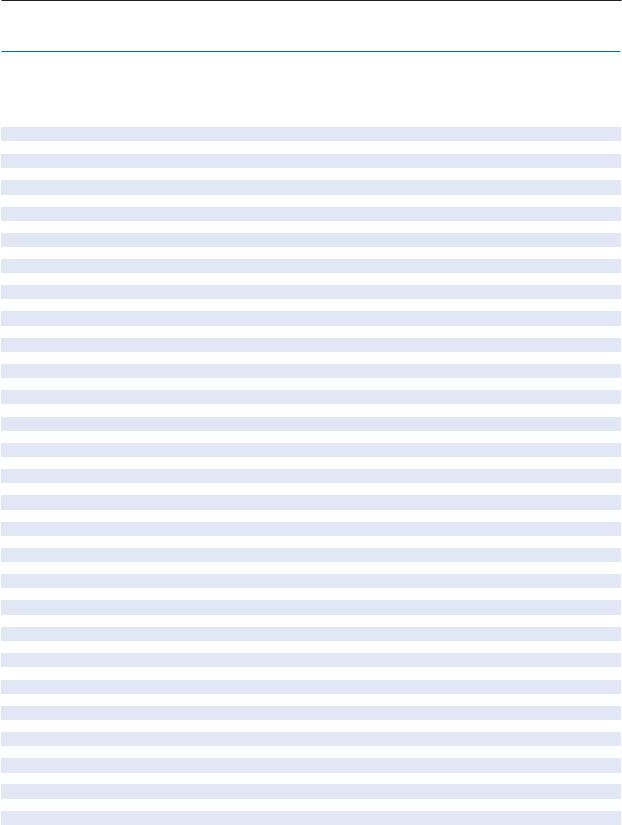
7. THE USE OF ELECTRONIC SERVICES IN TAX ADMINISTRATION – 239
Table 7.2. Corporate income tax returns: Use of electronic filing and pre-filling
|
|
|
Use of electronic filing (e-filing) |
|
|
|
|
|
|
% all returns e-filed |
|
Mandatory for some/ |
% 2011 returns pre- |
Country |
Year begun |
2004 |
2009 |
2011 |
all returns in 2011 |
filled to some degree |
OECD countries |
|
|
|
|
|
|
Australia |
1990s |
95 |
92 |
92 |
x |
0 |
Austria |
2004 |
30 |
96 |
95 |
9 |
0 |
Belgium |
2006 |
1 |
32 |
73 |
9 |
0 |
Canada |
2002 |
2 |
21 |
46 |
9 |
0 |
Chile |
1999 |
83 |
98 |
99 |
9 |
0 |
Czech Rep. |
2004 |
1 |
n.a. |
6 |
x |
0 |
Denmark |
2005 |
0 |
18 |
25 |
x |
0 |
Estonia |
n.a. |
0 |
95 |
98 |
9 |
0 |
Finland |
2000 |
1 |
19 |
32 |
x |
0 |
France |
1991 |
26 |
77 |
81 |
x |
0 |
Germany |
n.a. |
0 |
0 |
n.a. |
9 |
0 |
Greece |
n.a. |
0 |
0 |
0 |
- |
- |
Hungary |
2003 |
3 |
99 |
99 |
x |
0 |
Iceland |
1997 |
99 |
99 |
66 |
x |
100 |
Ireland |
2001 |
18 |
85 |
96 |
9 |
100 |
Israel |
2009 |
0 |
n.a. |
67 |
9 |
0 |
Italy |
1998 |
100 |
100 |
100 |
9 |
0 |
Japan |
2004 |
0 |
38 |
58 |
x |
0 |
Korea |
2004 |
92 |
96 |
97 |
x |
n.a. |
Luxembourg |
n.a. |
0 |
0 |
0 |
x |
0 |
Mexico |
1998 |
100 |
100 |
100 |
9 |
0 |
Netherlands |
2005 |
0 |
100 |
100 |
9 |
0 |
New Zealand |
1991 |
67 |
75 |
80 |
x |
0 |
Norway |
2000 |
47 |
75 |
88 |
x |
0 |
Poland |
2006 |
0 |
1 |
11 |
x |
0 |
Portugal |
2000 |
100 |
100 |
100 |
9 |
100 |
Slovak Rep. |
2005 |
0 |
n.a. |
2 |
x |
0 |
Slovenia |
2004 |
0 |
100 |
100 |
9 |
0 |
Spain |
1999 |
23 |
99 |
99 |
9 |
0 |
Sweden |
2009 |
0 |
68 |
68 |
x |
100 |
Switzerland |
--------Administered at sub-national level by cantons, some with their own e-filing systems--------- |
|||||
Turkey |
2005 |
72 |
99 |
99 |
9 |
0 |
United Kingdom |
2004 |
1 |
16 |
42 |
x |
0 |
United States |
2004 |
1 |
25 |
44 |
9 |
0 |
OECD ave. (unw.) |
|
29 |
64 |
68 |
|
13 |
Non-OECD countries |
|
|
|
|
|
|
Argentina |
1999 |
34 |
100 |
100 |
9 |
0 |
Brazil |
n.a. |
n.a. |
n.a. |
100 |
9 |
0 |
Bulgaria |
2006 |
0 |
21 |
38 |
x |
0 |
China |
2001 |
n.a. |
n.a. |
n.a |
x |
0 |
Colombia |
n.a. |
|
|
23 |
9 |
0 |
Cyprus |
2004 |
0 |
n.a. |
34 |
9 |
0 |
Hong Kong, China |
|
|
|
< 1 |
x |
0 |
India |
n.a. |
0 |
n.a. |
(1.25 m) |
9 |
0 |
Indonesia |
|
|
|
|
|
|
Latvia |
2008 |
0 |
92 |
75 |
9 |
0 |
Lithuania |
2004 |
34 |
67 |
73 |
x |
0 |
Malaysia |
2001 |
n.a. |
18 |
49 |
x |
0 |
Malta |
2001 |
82 |
99 |
92 |
9 |
0 |
Romania |
2004 |
0 |
2 |
n.a. |
n.a. |
0 |
Russia |
n.a. |
0 |
12 |
57 |
9 |
0 |
Saudi Arabia |
n.a. |
0 |
0 |
|
|
|
Singapore/1 |
2000 |
84 |
67 |
63 |
x |
0 |
South Africa |
2006 |
0 |
36 |
94 |
x |
100 |
For notes indicated by “/ (number)”, see Notes to Tables section at the end of the chapter, p. 250. Source: CIS survey responses and prior CIS editions.
TAX ADMINISTRATION 2013: COMPARATIVE INFORMATION ON OECD AND OTHER ADVANCED AND EMERGING ECONOMIES – © OECD 2013
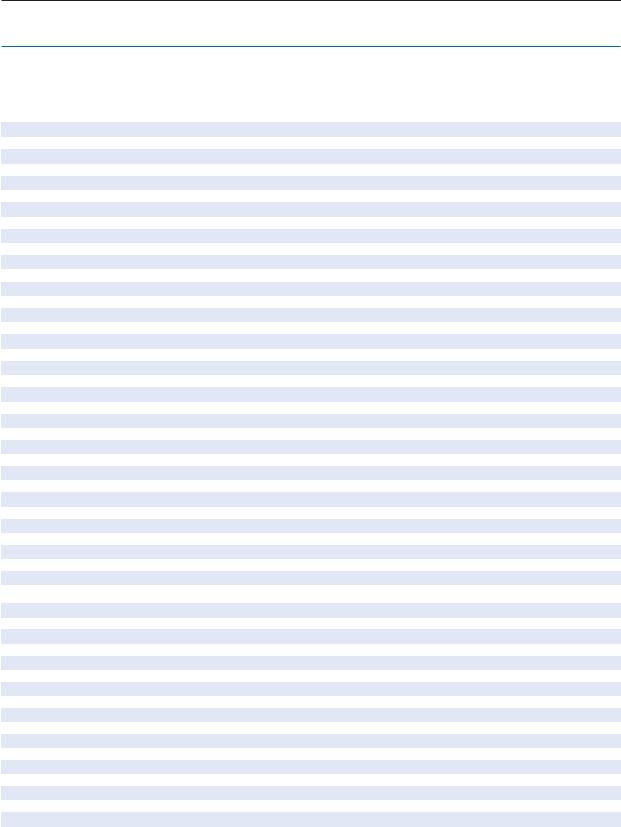
240 – 7. THE USE OF ELECTRONIC SERVICES IN TAX ADMINISTRATION
Table 7.3. Value added tax (VAT) returns: Use of electronic filing and pre-filling
|
|
|
Use of electronic filing (e-filing) |
|
|
|
|
|
|
% all returns e-filed |
|
Mandatory for some/ |
% 2011 returns pre- |
|
|
|
|
|
||
Country |
Year begun |
2004 |
2009 |
2011 |
all returns in 2011 |
filled to some degree |
|
|
|
|
|
|
|
OECD countries |
|
|
|
|
|
|
Australia |
2001 |
36 |
49 |
54 |
9 |
0 |
Austria |
2003 |
80 |
86 |
87 |
9 |
0 |
Belgium |
2001 |
9 |
90 |
97 |
9 |
0 |
Canada |
2002 |
11 |
22 |
41 |
9 |
0 |
Chile |
1999 |
37 |
64 |
71 |
9 |
0 |
Czech Rep. |
2004 |
1 |
n.a. |
10 |
x |
0 |
Denmark |
1999 |
60 |
95 |
98 |
9 |
0 |
Estonia |
2000 |
n.a. |
96 |
99 |
9 |
0 |
Finland |
1997 |
35 |
65 |
80 |
x |
0 |
France |
2001 |
2 |
28 |
39 |
x |
0 |
Germany |
2000 |
19 |
25 |
28 |
9 |
0 |
Greece |
2000 |
51 |
70 |
83 |
9 |
0 |
Hungary |
2000 |
6 |
99 |
99 |
x |
0 |
Iceland |
2004 |
16 |
65 |
74 |
x |
0 |
Ireland |
2000 |
13 |
45 |
63 |
9 |
100 |
Israel |
n.a. |
n.a. |
n.a. |
n.a. |
9 |
0 |
Italy |
1998 |
100 |
100 |
100 |
9 |
0 |
Japan |
2004 |
0 |
57/29/1 |
85/40/1 |
x |
0 |
Korea |
2000 |
50 |
74 |
79 |
x |
n.a. |
Luxembourg |
2003 |
0 |
26 |
54 |
9 |
0 |
Mexico |
2002 |
55 |
100 |
100. |
9 |
0 |
Netherlands |
2005 |
0 |
100 |
100 |
9 |
0 |
New Zealand |
1992 |
9 |
21 |
28 |
x |
0 |
Norway |
2001 |
38 |
88 |
92 |
x |
0 |
Poland |
2006 |
0 |
2 |
11 |
x |
0 |
Portugal |
2000 |
83 |
100 |
100 |
9 |
0 |
Slovak Rep. |
2005 |
0 |
n.a. |
9 |
x |
0 |
Slovenia |
2004 |
0 |
100 |
100 |
9 |
0 |
Spain/1 |
1999 |
23 |
75 |
80 |
9 |
0 |
Sweden |
2001 |
3 |
35 |
55 |
x |
0 |
Switzerland |
2010 |
0 |
0 |
< 1 |
x |
0 |
Turkey |
2004 |
70 |
99 |
99 |
9 |
0 |
United Kingdom |
2003 |
0 |
20 |
67 |
9 |
0 |
United States |
------------------------------------------------------------- |
|
|
n.app.------------------------------------------------------------ |
|
|
OECD ave. (unw.) |
|
26 |
62 |
67 |
|
|
Non-OECD countries |
|
|
|
|
|
|
Argentina |
1999 |
30 |
100 |
100 |
9 |
0 |
Brazil |
------------------------------------------------------------- |
|
|
n.app.------------------------------------------------------------ |
|
|
Bulgaria |
2004 |
5 |
68 |
82 |
9 |
0 |
China |
n.a. |
n.a. |
n.a. |
n.a. |
x |
0 |
Colombia |
n.a. |
n.a. |
n.a. |
24 |
9 |
0 |
Cyprus |
2004 |
1 |
1 |
2 |
x |
0 |
Hong Kong, China |
------------------------------------------------------------- |
|
|
n.app.------------------------------------------------------------ |
|
|
India |
------------------------------------------------------------- |
|
|
n.app.------------------------------------------------------------ |
|
|
Indonesia |
|
|
|
|
|
|
Latvia |
2008 |
0 |
64 |
85 |
9 |
0 |
Lithuania |
2004 |
35 |
87 |
93 |
x |
0 |
Malaysia |
------------------------------------------------------------- |
|
|
n.app.------------------------------------------------------------ |
|
|
Malta |
2009 |
0 |
< 1 |
2 |
x |
0 |
Romania |
2004 |
0 |
5 |
n.a. |
n.a. |
n.a |
Russia |
n.a. |
0 |
26 |
51 |
9 |
0 |
Saudi Arabia |
------------------------------------------------------------- |
|
|
n.app.------------------------------------------------------------ |
|
|
Singapore |
2005 |
0 |
99 |
100 |
9 |
0 |
South Africa |
2001 |
7 |
47 |
92 |
9 |
100 |
For notes indicated by “/ (number)”, see Notes to Tables section at the end of the chapter, p. 250. Source: CIS survey responses and prior CIS editions.
TAX ADMINISTRATION 2013: COMPARATIVE INFORMATION ON OECD AND OTHER ADVANCED AND EMERGING ECONOMIES – © OECD 2013

7. THE USE OF ELECTRONIC SERVICES IN TAX ADMINISTRATION – 241
The provision of pre-filled tax returns to taxpayers
One of the more significant developments in tax return process design and the use of technology by revenue bodies over the last decade or so concerns the emergence of systems of pre-filled tax returns for the PIT. Pre-filling entails the use by revenue bodies of information held by them (e.g. taxpayer identity information, elements of taxpayer history, and third party reports of income and deductions etc.) to populate fields within tax returns etc that are made available to taxpayers for examination by taxpayers. Depending on the degree of sophistication of the service (and the legislative framework in place), fully or partially-completed tax returns can be made available to taxpayers in electronic and/or paper form. In their most advanced form, tax return preparation has been fully automated for the vast majority of the taxpayer population. This is particularly the case for Nordic region countries where revenue bodies offer this form of assistance for virtually all their taxpayers, with a large proportion of such returns being fully completed for the taxpayers concerned (e.g. Denmark and Finland. In the case of Denmark, prior CIS editions have reflected its progress over many years to develop a very comprehensive regime of prefilled tax returns that for fiscal year 2011 saw the universal use of pre-filling for all personal taxpayers, with almost 80% of these being fully completed for the taxpayers concerned – see Box 7.1 which sets out a description of how the system of prefilled returns has evolved in Denmark over the last two decades.
Box 7.1. Denmark: The evolution of pre-filled tax returns
Set out hereunder is a description of the phases in the evolution of prefilled returns in Denmark over the last 20 years, commencing with the initial very limited use of pre-filling in the late-1980”s and, by 2008, arriving at a position of total automation where the vast majority of taxpayers could access online their tax return information and related notice of assessment.
2008 to |
Total automation: Pre-filled returns are no longer sent to taxpayers. Taxpayers receive an assessment notice |
present |
(with provision to access on-line the detailed tax return data that has been used to establish their tax liabilities. |
time |
Taxpayers remain obliged to advise the revenue body of nay necessary adjustments. |
2006 |
Pre-filled returns and notice together: Taxpayers with fully completed pre-filled returns also receive an |
|
assessment notice alongside their tax returns. |
2004 |
Online assessment notices: Taxpayers with fully completed pre-filled returns receive assessment notice |
|
online, when confirming the completeness of the pre-filled return. |
1999 |
Pre-filled returns available on-line: Pre-filled returns are available online for review by taxpayers and their |
|
notification of changes or confirmation of acceptance. Notices of assessment are sent after processing. |
1995 |
First electronic filing application: Tax-returns (not pre-filled) are available online. Taxpayers are obliged |
|
to fill in all relevant data. |
1992 |
System of silent acceptance introduced: Taxpayers receiving pre-filled returns are freed of the obligation to |
|
confirm their completeness, if correct. Taxpayers must advise any adjustments to the revenue body. Notices |
|
of assessment are sent after processing. |
1992 |
First fully completed tax returns: Refinement of pre-filling system with fully-completed tax returns (on |
|
paper) sent to many taxpayers for their review-to be confirmed or adjusted. Notice of assessment sent after |
|
processing. |
1988 |
Limited pre-filling of tax returns: System of limited pre-filling of personal tax returns (on paper) commences. |
|
Taxpayers are required to complete their return and send it to the revenue body. Notices of assessment are sent |
|
after processing. |
Source: Danish revenue officials.
TAX ADMINISTRATION 2013: COMPARATIVE INFORMATION ON OECD AND OTHER ADVANCED AND EMERGING ECONOMIES – © OECD 2013
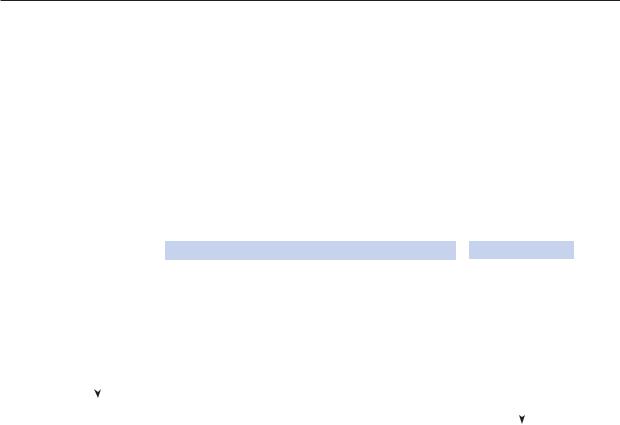
242 – 7. THE USE OF ELECTRONIC SERVICES IN TAX ADMINISTRATION
As already mentioned, pre-filling can be carried out with varying degrees of sophistication. To explain this further, the capability/maturity model depicted in Figure 7.1, extracted from the FTA’s comprehensive study (OECD, 2010), describes the varying degrees of development (and related enhancement) that have been observed from revenue body experience and documented in prior FTA reports. However, critical to this progress has been the existence of a compatible legislative framework – one that makes provision for extensive third party reporting of relevant taxpayer information and which has few deductions and credits that cannot be verified by third party information sources. This aside, the model provides a means of classifying the nature of the service being provided by revenue bodies to assist taxpayers (in terms of the likely level of benefits being delivered).
Figure 7.1. Maturity model of pre-filling capabilities
LEVEL OF PREFILLING |
|
CAPABILITY DESCRIPTION |
|
LEVEL OF BENEFITS |
||
Basic (limited) |
|
1. A paper form pre-filled with limited taxpayer identity &/or history |
|
Minor |
||
|
|
|
information |
|
|
|
|
|
|
2. An electronic form pre-filled with limited taxpayer identity &/or history |
|
|
|
|
|
|
information |
|
|
|
|
|
|
|
|
|
|
|
|
|
3. A paper form pre-filled with taxpayer identity &/or history information |
|
|
|
|
|
|
and limited income/deduction and credits information |
|
|
|
|
|
|
|
|
|
|
|
|
|
4. An electronic form pre-filled with taxpayer identity &/or history |
|
|
|
|
|
|
information and limited income/deduction/credits information |
|
|
|
|
|
|
|
|
|
|
|
|
|
5. A paper form pre-filled with taxpayer identity &/or history information |
|
|
|
|
|
|
and most/all income/deduction and credits information |
|
|
|
|
|
|
|
|
|
|
|
|
|
|
|
|
|
Advanced |
|
6. An electronic form pre-filled with taxpayer identity &/or history |
|
|
|
|
(fully completed) |
|
information and most/all income/deduction/credits information |
|
|
|
|
|
|
|
|
|
|
|
|
|
|
7. Full automation (enabling elimination of original process) |
|
Major |
|
|
|
|
|
|
|
|
For this series, revenue bodies were surveyed on the extent to which pre-filling approaches were being used for the major taxes and, where this was the case for the personal income tax, the proportion of tax returns that were fully pre-filled for 2011. Drawing on the information provided in Table 7.1, the key findings are as follows:
Pre-filling has evolved to become a significant (and for some, transformational) component of revenue bodies’ e-services strategy for the PIT in many countries:.
-Seven revenue bodies (i.e. Chile, Denmark, Finland, Malta, New Zealand, Norway, and Sweden) provide a capability that is able to generate at year-end a fully completed tax return (or its equivalent) in electronic and/or paper form for the majority of taxpayers required to file tax returns, while three bodies (i.e. Singapore, South Africa, Spain, and Turkey) achieved this outcome in 2011 for between 30-50% of their personal taxpayers.
-In addition to the countries mentioned, substantial use of pre-filling to partially complete tax returns was reported by seven other revenue bodies – Australia, Estonia, France, Hong Kong, Iceland, Italy, Lithuania, and Portugal.
-Overall, almost half of surveyed revenue bodies reported some use of pre-filling, suggesting that many revenue bodies have come to realise the significant benefits that can be realised.
For other taxes, use of pre-filling is much more limited and generally confined to basic taxpayer identification and demographic information.
TAX ADMINISTRATION 2013: COMPARATIVE INFORMATION ON OECD AND OTHER ADVANCED AND EMERGING ECONOMIES – © OECD 2013

7. THE USE OF ELECTRONIC SERVICES IN TAX ADMINISTRATION – 243
Electronic payments of tax
Tax payments constitute one of the most common forms of interaction between taxpayers and revenue bodies. This is especially the case for businesses that are typically required to regularly remit a variety of payments during each fiscal year (covering both their own tax liabilities and those of their employees). More generally, citizens and businesses are required to make significant numbers of payments for bills they receive each year (e.g. for utilities, and credit card debts). The sheer number of payment transactions that must be effected in a normally-functioning economy has led to significant developments over the last decade in the range of electronic payment methods made available to citizens and businesses at large, all aimed at making the “payment experience” easier and less costly.
Prior editions of CIS observed that revenue bodies were making reasonable progress in increasing the range of fully electronic payment methods available to taxpayers. The main examples cited were the use of direct debit, direct credit (i.e. on-line payments by taxpayers), and phone banking. However, they also noted that manual (more costly) payment methods – for example, mailed cheques, cash, or “in-person” payments by taxpayers at revenue bodies and/or at third party agencies (using cash or cheques) – were still the predominant method of payment in around 50% of surveyed revenue bodies. As a result, many revenue bodies were still incurring significant administrative costs for their payments processing. A related concern highlighted in prior CIS editions was the fact that many revenue bodies were unable to report data concerning volume usage by payment method, suggesting that they had little knowledge of the costs being incurred, both by themselves and taxpayers.
As for other types of electronic services, the methods of electronic payment available vary in their level of “maturity” (or degree of related automation), and the resulting benefits they can deliver for taxpayers, revenue bodies and third parties. To promote further thinking about this matter the FTA’s 2010 survey report set out a model depicting the typical methods of payment available to revenue bodies to collect taxes, a description of the types of costs normally involved and a judgment as to the associated degree of automation and costs involved – see Figure 7.2.
Figure 7.2. Maturity model of payment methods
DEGREE OF AUTOMATION
LOW (LIMITED)
HIGH (FULLY ELECTRONIC – categories 5, 6, and 7)
CAPABILITY
DESCRIPTION |
COSTS INCURRED |
|
|
1. In-person payment at revenue body; |
Taxpayers’ time to pay; revenue bodies’ |
data captured electronically on receipt |
processing costs |
|
|
2. In-person payment at agency |
Taxpayers’ time to pay; agency |
(e.g. bank); data captured electronically |
transaction fee |
|
|
3. Mailed cheque to revenue body; |
Postage and banks’ and revenue bodies’ |
automated payment data capture |
processing costs |
|
|
4. Taxpayers’ use of phone banking |
Taxpayers’ time and phone call |
|
|
5. Taxpayers’ use of Internet payment |
Taxpayers’ time |
method (via bank/revenue body) |
|
|
|
6. Taxpayers use of “direct debit” |
Taxpayers’ time re renewal of each |
authority for payment (on liability-by- |
authorisation |
liability basis) |
|
|
|
7. Taxpayers use of blanket “direct |
Taxpayers’ time in providing an ongoing |
debit” authority for payment of all tax |
direct debit authorisation |
liabilities |
|
|
|
Source: CTPA Secretariat.
LEVEL OF COSTS
HIGH
VERY LOW
TAX ADMINISTRATION 2013: COMPARATIVE INFORMATION ON OECD AND OTHER ADVANCED AND EMERGING ECONOMIES – © OECD 2013

244 – 7. THE USE OF ELECTRONIC SERVICES IN TAX ADMINISTRATION
In support of this line of thinking, the report also provided an example of cost data from one country pointing to significant differences in the costs arising with different payment methods. These cost data suggested that payment methods which were fully manual (e.g. those involving the use of cheques) were around five to six times more costly for revenue bodies and the banking system to administer than fully electronic methods such as direct credits. Given the large volumes of payments received, the report concluded that revenue bodies operating with predominantly manual payment methods could derive considerable savings by substantially increasing the use of fully electronic payment methods.
As suggested by the model depicted in Figure 7.2, costs reduce significantly when moving from fully manual methods that require the use of cheques and/or personal visits by taxpayers to the revenue body or its agents, to the use of fully electronic and low cost payment methods such as Internet banking (direct credit) and “direct debit”. Accordingly, in countries where use of fully electronic payment methods is relatively low, there should be potential for significant benefits from substantially increasing their use.
For this series, revenue bodies were surveyed on the nature of the payment methods available for collecting taxes and their relative usage (in % terms) for the 2011 fiscal year (see Table 7.4). Unfortunately, many revenue bodies were not able to provide volumerelated data so the findings and observations are limited to just over half of surveyed revenue bodies:
Taken as a whole, and drawing on data from prior series, revenue bodies appear to be making a reasonable rate of progress in fully automating tax payment collection:
Status of tax payment collection methods |
2010 |
2011 |
Number of revenue bodies reporting fully electronic payment methods for the |
6 of 22 (27%) |
12 of 28 (43%) |
majority of tax payments |
|
|
Number of revenue bodies reporting partially electronic payment methods for |
6 of 22 (27%) |
11 of 28 (39%) |
the majority of tax payments |
|
|
Number of revenue bodies reporting non-electronic payment methods for the |
3 of 22 (14%) |
5 of 28 (18%) |
majority of tax payments |
|
|
Number of revenue bodies reporting use of in-person in-office payment |
27 of 49 (55%) |
25 of 52 (48%) |
collection method |
|
|
Twelve revenue bodies reported that the majority of payments were made by fully electronic methods, including six where the aggregate proportion exceeded 75% (i.e. Chile, Estonia, France, Ireland, Netherlands and Sweden);
Partially electronic payment methods – these typically entail the collection of payments made in-person to a third party agent (e.g. a bank or post office) that transmits the relevant payment data electronically to the revenue body – were the predominant payment method in eleven countries.
Almost half of revenue bodies continue to provide “in-person” payment facilities via their office networks; in many cases, the volumes reported for this method were relatively low raising possible questions as to “cost/benefit” arguments for their retention.
Four revenue bodies reported reasonably significant volumes (30% or more) of mailed cheques that must be processed internally by them (i.e. Canada, Germany, New Zealand, and United States).
TAX ADMINISTRATION 2013: COMPARATIVE INFORMATION ON OECD AND OTHER ADVANCED AND EMERGING ECONOMIES – © OECD 2013

7. THE USE OF ELECTRONIC SERVICES IN TAX ADMINISTRATION – 245
Table 7.4. Methods available for tax payments and their usage in 2011
|
|
Payment methods available and actual or estimated usage (%), |
|
|
||||
|
|
|
(9where used but volume not known) |
|
|
|||
|
Non-electronic |
Partially electronic |
Fully electronic: fully self-service by taxpayers |
|||||
|
Mailed |
In-person at |
Agency |
Phone |
|
|
Payment |
|
Country |
cheques |
office |
payment |
banking |
Internet |
Direct debit |
kiosk |
Others |
OECD countries |
|
|
|
|
|
|
|
|
Australia |
10 |
2 |
24 |
3 |
60 |
3 |
|
44 |
Austria |
<1 |
2 |
|
50 |
|
|
||
Belgium |
31 |
9 |
9 |
9 |
9 |
9 |
|
2 |
Canada |
5 |
32 |
|
28 |
2 |
|
||
Chile |
|
|
25 |
|
----------- 75% ---------- |
|
(In 75%)/1 |
|
Czech Rep. |
|
9 |
9 |
9 |
9 |
9 |
|
|
Denmark |
|
1 |
9 |
|
9 |
|
|
|
Estonia |
|
4 |
|
95 |
|
|
|
|
Finland |
|
|
9 |
9 |
9 |
9 |
9 |
|
France |
9/1 |
9/1 |
|
|
------ 66 to 71 %/1 ----- |
|
9/1 |
|
Germany |
<33/1 |
|
|
|
----------- >67/1 ---------- |
|
|
|
Greece |
9 |
9 |
9 |
9 |
9 |
9 |
|
|
Hungary |
|
|
39 |
9 |
60 |
|
|
9/1 |
Iceland |
9 |
9 |
9 |
|
9 |
9 |
|
1 |
Israel |
8 |
3 |
84 |
|
9 |
3 |
|
|
Ireland |
3 |
13 |
|
65 |
11 |
|
<1 |
|
Italy |
|
4 |
29 |
|
30 |
41 |
|
3 |
Japan |
|
75 |
< 1 |
1/1 |
16 |
9 |
||
Korea |
|
2 |
69 |
18 |
- |
2 |
||
Luxembourg |
9/1 |
<1/2 |
>99/1 |
|
>99/2 |
|
|
<1/1 |
Mexico |
- |
|
54 |
|
46 |
55 |
|
|
Netherlands |
|
<1 |
|
44 |
|
|
||
New Zealand |
33 |
|
5 |
|
------------- 62 ------------ |
|
|
|
Norway |
x |
9 |
9 |
9 |
9 |
9 |
x |
|
Poland |
9 |
9 |
9 |
|
9 |
9 |
|
|
Portugal |
|
47 |
53 |
|
< 1 |
60 |
|
|
Slovak Rep. |
|
|
35 |
|
|
|
|
|
Slovenia |
9 |
9 |
|
9 |
9 |
9 |
|
|
Spain |
|
|
9 |
9 |
9 |
9 |
|
|
Sweden |
|
|
9 |
9 |
90 |
- |
|
|
Switzerland |
|
|
9 |
- |
9 |
9 |
|
|
Turkey |
9 |
9 |
9 |
9 |
9 |
9 |
|
|
United Kingdom |
16 |
1 |
10 |
5 |
26 |
43 |
|
23.3/1 |
United States/1 |
41 |
2 |
3 |
21 |
9 |
|
||
Non-OECD countries |
|
|
|
|
|
|
|
|
Argentina |
|
|
9 |
9 |
9 |
9 |
9 |
7/1 |
Brazil |
|
|
63 |
<1 |
30 |
(1)/1 |
|
|
Bulgaria |
|
|
(2)/1 |
|
(3)/1 |
|
(3)/1 |
|
China |
9 |
9 |
9 |
9 |
9 |
9 |
|
|
Colombia |
|
|
93 |
|
8 |
|
|
|
Cyprus |
9 |
9 |
9(VAT) |
|
9(direct |
|
|
|
Hong Kong, China |
9 |
|
34 |
19 |
taxes) |
9 |
|
|
|
29 |
|
|
|||||
India |
|
|
9 |
|
9 |
|
|
|
Indonesia |
|
|
|
|
|
|
|
|
Latvia |
|
|
9 |
|
9 |
|
9 |
|
Lithuania |
------------- 54 ------------- |
9 |
|
9 |
|
9 |
|
|
Malaysia |
18 |
------------------------------ 28 ------------------------- |
|
|||||
Malta/1 |
9 |
9 |
9 |
|
9 |
9 |
|
9 |
Romania |
|
9 |
9 |
|
9 |
9 |
|
|
Russia |
x |
x |
About 100 |
9 |
9 |
9 |
9 |
|
Saudi Arabia |
14 |
3 |
97 |
----------- 6 ----------- |
50 |
15 |
5 |
|
Singapore |
|
10 |
||||||
South Africa |
9 |
9 |
9 |
|
9 |
9 |
|
|
For notes indicated by “/ (number)”, see Notes to Tables section at the end of the chapter, p. 250. Source: CIS survey responses.
TAX ADMINISTRATION 2013: COMPARATIVE INFORMATION ON OECD AND OTHER ADVANCED AND EMERGING ECONOMIES – © OECD 2013

246 – 7. THE USE OF ELECTRONIC SERVICES IN TAX ADMINISTRATION
Payments made in person, either at the revenue body or via an agency (e.g. banks or post offices), were the predominant payment method in six countries.
Generally speaking, the overall rate of fully electronic e-payments in 2011 was well below e-filing rates for the major taxes; while not researched as part of this survey, there could be a number of factors contributing to this outcome, for example: 1) taxpayers’ perceptions of security weaknesses in the banking system; 2) taxpayers’ reticence to communicate bank account details either in writing or electronically to revenue bodies; 3) taxpayers’ reluctance to use direct debit facilities; and/or 4) the failure of revenue bodies to adequately promote e-payment methods.
Many revenue bodies were unable to report payment volume data suggesting the probability of insufficient attention being given to fully automating this routine/ high volume aspect of tax administration and the potential for efficiency gains.
The lack of comprehensive data on payment volumes for the different payment methods complicate the drawing of any conclusions across the full population of surveyed revenue bodies; that said, there appears potential for substantially greater use of e-payment capabilities in many surveyed countries.
Other electronic services available to taxpayers
In addition to basic transaction services, prior series reports have highlighted a growing trend of revenue bodies to provide a range of other electronic services to taxpayers, taking advantage of growth in the provision of broadband and Internet access, and developments for the provision of security safeguards concerning access to personal taxpayer information. Revenue bodies were surveyed on whether they provide certain designated services (e.g. online access to personal taxpayer account information). Drawing on the information provided in Table 7.5 the key findings and observations are as follows:
Around three quarters of revenue bodies reported that their taxpayers have on-line access, subject to appropriate security safeguards, to some level of personal taxpayer information;
Just on two thirds reported the existence of capabilities enabling the revenue body to communicate electronically with eligible taxpayers.
Just over half of revenue bodies reported the existence of facilities giving staff remote access to their corporate systems (although the nature of such facilities was not explored in detail);
With few exceptions, revenue bodies reported the provision of a comprehensive suite of tax-related information that is accessible to taxpayers via the Internet, as well as the existence of facilities that give taxpayers and tax intermediaries access to a reasonably comprehensive legal/tax law database.
Just on half of revenue bodies reported some experience with the use of social media technologies (e.g. YouTube, Facebook, and Twitter) in their dealings with taxpayers; recent work undertaken by the FTA (see next section) suggests that this was on a relatively small scale and reach and for many was still in a largely experimental phase.
TAX ADMINISTRATION 2013: COMPARATIVE INFORMATION ON OECD AND OTHER ADVANCED AND EMERGING ECONOMIES – © OECD 2013
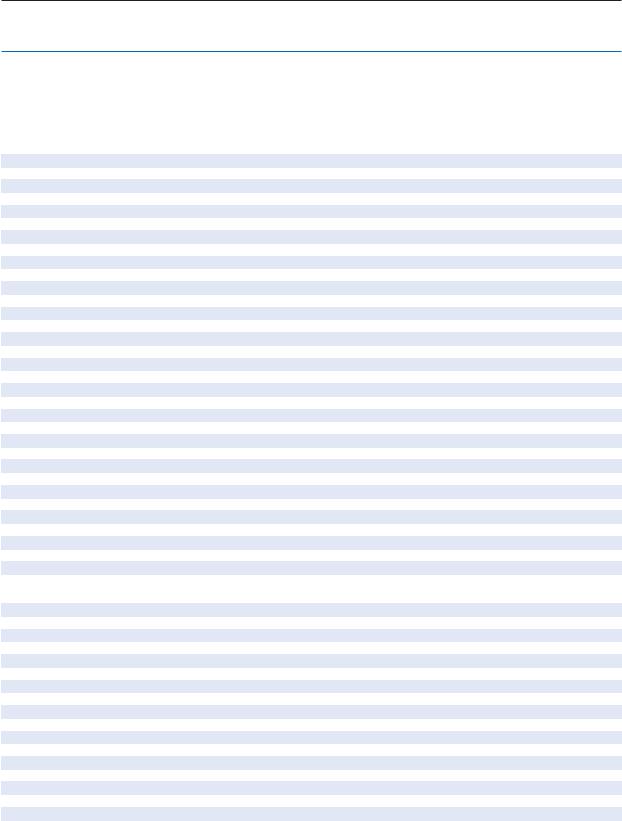
7. THE USE OF ELECTRONIC SERVICES IN TAX ADMINISTRATION – 247
Table 7.5. Other electronic services provided to taxpayers, etc.
|
|
|
Nature of capabilities available |
|
|
|
|
Taxpayers have |
|
|
|
Taxpayers have |
|
|
online access to |
|
Taxpayers can |
Remote field staff |
online access to |
Taxpayers have |
Country |
their personal tax |
Communication |
receive electronic |
have access to |
comprehensive |
access to a legal |
details |
via social media |
communications |
taxpayer data |
website |
database |
|
OECD countries |
|
|
|
|
|
|
Australia |
9/1 |
9 |
9/1 |
9 |
9 |
9 |
Austria |
9 |
9 |
9 |
9 |
9 |
9 |
Belgium |
9 |
x |
9 |
9 |
9 |
9 |
Canada |
9 |
9/1 |
9 |
9 |
9 |
9/2 |
Chile |
9 |
9/1 |
9 |
9 |
9 |
9 |
Czech Rep. |
9 |
x |
9 |
9 |
9 |
9 |
Denmark |
9 |
9 |
9 |
9 |
9 |
9 |
Estonia |
9 |
9 |
9 |
x |
9 |
9 |
Finland |
9 |
9/1 |
x |
x |
9 |
9 |
France |
9 |
x |
x |
9 |
9 |
9 |
Germany |
9 |
9 |
9 |
9 |
9 |
9 |
Greece |
9 |
x |
9 |
9 |
9 |
9/1 |
Hungary |
9 |
9 |
9 |
9 |
9 |
9 |
Iceland |
9 |
x |
9 |
9 |
9 |
9/1 |
Ireland |
9 |
x/1 |
9 |
9 |
9 |
9/2 |
Israel |
9 |
x |
x/1 |
9 |
9 |
9 |
Italy |
9 |
x |
9 |
x |
9 |
9/1 |
Japan |
9 |
9 |
9 |
x |
9 |
9 |
Korea |
9 |
9 |
9 |
9 |
9 |
9 |
Luxembourg |
x/1 |
x |
x |
9 |
9 |
9/2 |
Mexico |
9 |
9/1 |
9 |
9 |
9 |
9 |
Netherlands |
9/1 |
9/2 |
9 |
x |
9 |
9 |
New Zealand |
9 |
9 |
9 |
9 |
9 |
9 |
Norway |
9 |
9 |
9 |
9 |
9 |
9 |
Poland |
x |
9 |
9/1 |
x |
9 |
9 |
Portugal |
9 |
9 |
9 |
9 |
9 |
9 |
Slovak Rep. |
9/1 |
x |
x |
x |
9 |
x |
Slovenia |
9 |
|
9 |
x |
9 |
9 |
Spain |
9 |
x |
9 |
9 |
9 |
9 |
Sweden/1 |
9 |
x |
x |
9 |
9 |
9 |
Switzerland |
9/1 |
x |
9 |
x |
9 |
9 |
Turkey |
9 |
9 |
9 |
9 |
9 |
9 |
United Kingdom |
9/1 |
9 |
9 |
9 |
9/1 |
9 |
United States/1 |
x/1 |
x/2 |
9/1 |
9 |
9 |
9 |
Non-OECD countries |
|
|
|
|
|
|
Argentina |
9 |
x |
9 |
9 |
9 |
9 |
Brazil |
9 |
x |
9 |
9 |
9 |
9 |
Bulgaria |
x |
9 |
9 |
x |
9 |
9 |
China |
9 |
9 |
9 |
9 |
9 |
9 |
Colombia |
9 |
9 |
9 |
x |
9 |
9 |
Cyprus |
9/1 |
x |
x |
x |
9 |
9 |
Hong Kong, China |
9 |
x |
9 |
x |
9 |
9 |
India |
9 |
x |
9 |
x |
9 |
9 |
Indonesia |
x |
x |
x |
x |
9 |
9 |
Latvia |
9 |
x |
x |
9 |
9 |
9 |
Lithuania |
x |
9 |
9 |
x |
9 |
9 |
Malaysia |
9 |
9 |
9 |
x |
9 |
x |
Malta |
9 |
x |
9 |
x |
9 |
9 |
Romania |
x |
x |
x |
x |
9 |
9/1 |
Russia |
9 |
x |
9 |
x |
9 |
9 |
Saudi Arabia |
x |
x |
x |
x |
x |
9 |
Singapore |
9 |
9 |
9 |
x |
9 |
9/1 |
South Africa |
9 |
9 |
9 |
9 |
9 |
9 |
For notes indicated by “/ (number)”, see Notes to Tables section at the end of the chapter, p. 250. Sources: CIS survey responses.
TAX ADMINISTRATION 2013: COMPARATIVE INFORMATION ON OECD AND OTHER ADVANCED AND EMERGING ECONOMIES – © OECD 2013

248 – 7. THE USE OF ELECTRONIC SERVICES IN TAX ADMINISTRATION
Use of social media technologies in tax administration
As noted in the FTA’s recent study (2011);
Social media technologies are the new and personalised face of the Internet. Their arrival and development brings promises of stratified personal contact and new forms of communication and interaction with, for example, over half a billion potential users already active on Facebook alone every day. Not surprisingly, the prospects of utilizing this and other technologies have made social media technology attractive to commercial interests exploring an entirely new universe of advertising, communication and interaction with consumers. Governments are also starting to explore and use these technologies in a variety of ways. While experience to date is relatively limited there are indications of significant potential benefits to businesses, Governments and citizens.
It was in light of such observations that the FTA decided in 2011 to undertake a study of how revenue bodies were using social media technologies and their experiences in doing so. Full details can be found in the FTA’s published report while some limited observations are set out hereunder:
While the breadth of revenue body experience with SMTs to date is relatively limited, it appears overwhelmingly positive: 1) it offers virtually free online word- of-mouth marketing; 2) it enables positive attention for engaging in dialogue; 3) it facilitates the recruitment of users for product testing/innovation; and 4) it contributes to revenue administration image building.
Like any new technology, there are challenges and risks to be managed (e.g. breaches of security and provision of misleading information); as reported by revenue bodies, these all appear manageable by adopting a properly considered and co-ordinated strategy built on the philosophy of […] start small, monitor, evaluate and build on from there in a similar manner.
The business case for SMT deployment for the moment largely rests on the potential benefits envisaged from using SMTs to advertise revenue body news, products and developments and/or conducting dialogue for a range of purposes (e.g. product testing, consultation on proposals) relevant to conducting day-to-day tax administration while the up-front investments required are, for the most part, relatively limited and contained.
The incidence of negative experiences with SMTs reported to date by revenue bodies has, for the most part, been minimal and of relatively little consequence; much of what has been experienced can be linked to weaknesses in setups, challenges in resource availability, and negative feedback (some of which relates to tax policy itself, rather than SMTs per se).
Use IVR technologies in revenue bodies call centre operations
As part of the information gathering undertaken for CIS, revenue bodies were requested to provide data, where available, on the various channels of service demand managed by them, including for the phone channel – see Chapter 6. This is a new field of inquiry for CIS and is intended to support the FTA’s work on demand management and to assist revenue bodies in their administration, specifically by drawing attention to emerging practices for improving service demand management, leading to better service to taxpayers and reduced costs of administration. As will be evident from the data in Table 6.4 in
TAX ADMINISTRATION 2013: COMPARATIVE INFORMATION ON OECD AND OTHER ADVANCED AND EMERGING ECONOMIES – © OECD 2013

7. THE USE OF ELECTRONIC SERVICES IN TAX ADMINISTRATION – 249
Chapter 6, the data gathered in respect of the phone channel included the use of Interactive Voice Response (IVR) technologies that can enable automation of some service delivery
– see Box 7.2.
Box 7.2. Interactive Voice Response (IVR) Technologies: What are they?
What do they do?
In telecommunications, IVR allows customers to interact with a company’s host system via a telephone keypad or by speech recognition, after which they can service their own inquiries by following the IVR dialogue. IVR systems can respond with prerecorded or dynamically generated audio to further direct users on how to proceed. IVR applications can be used to control almost any function where the interface can be broken down into a series of simple interactions. IVR systems deployed in the network are sized to handle large call volumes.
IVR technology is also being introduced into automobile systems for hands-free operation. Current deployment in automobiles revolves around satellite navigation, audio and mobile phone systems.
It is common in industries that have recently entered the telecommunications industry to refer to an automated attendant as an IVR. The terms, however, are distinct and mean different things to traditional telecommunications professionals, whereas emerging telephony and VoIP professionals often use the term IVR as a catch-all to signify any kind of telephony menu, even a basic automated attendant. The term voice response unit (VRU) is sometimes used as well.
Source: Wikipedia (November 2012), http://en.wikipedia.org/wiki/Interactive_voice_response – cite_ note-0#cite_note-0.
For the purpose of this series, revenue bodies were asked to indicate if such technologies are deployed and the related volumes of inquiries handled, along with similar data for phone calls received via their call centres. The key findings are as follows:
Less than half (21) of revenue bodies reported the use of IVR technologies and related volumes;
For revenue bodies reporting IVR usage, relatively large volumes were reported by 10 revenue bodies, including Canada, Denmark, Ireland, Korea, Mexico, Spain, and United States; and
Data on phone service demand (including IVR) were not reported by over 25% of revenue bodies suggesting possible gaps in their management information systems in this area.
Given the emphasis being placed in many revenue bodies on cost cutting/improving efficiency, the use of IVR technologies and their potential to enhance service delivery seems likely to receive greater attention over the medium term.
TAX ADMINISTRATION 2013: COMPARATIVE INFORMATION ON OECD AND OTHER ADVANCED AND EMERGING ECONOMIES – © OECD 2013
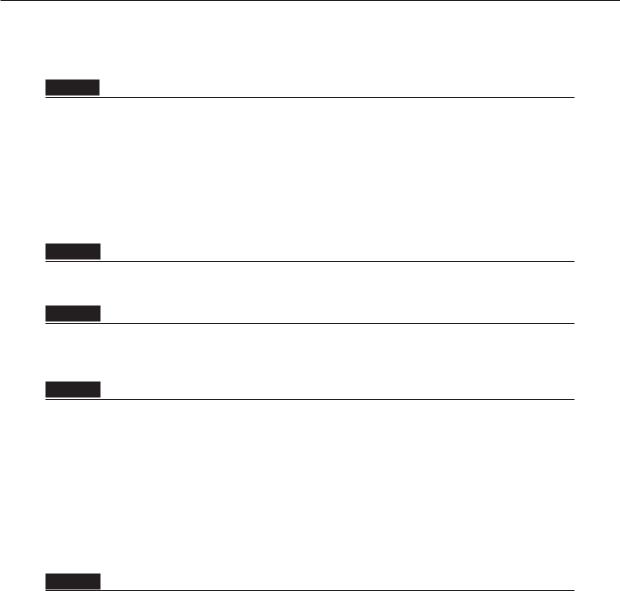
250 – 7. THE USE OF ELECTRONIC SERVICES IN TAX ADMINISTRATION
Notes to Tables
Table 7.1. Personal income tax returns: Use of electronic filing and pre-filling
/1. Austria: Mandatory for business assessments; for employee assessments voluntary. Spain: Use of electronic filing: E-filing includes both internet and intranet filing and pre-filled PIT returns (handled electronically). Only 1% of PIT returns are filed manually as most of the returns are filed using a Tax Helping Programme (PADRE) developed by the Tax Agency. This programme creates a PDF code easily readable by a laser scanner.
/2. Wage and salary, Specified self-employed/business income are pre-filled. Singapore: e-Filing results are based on returns as at 18 Apr 2011 for Year of Assessment 2011. Spain: Use of pre-filling for 2011: 100% of the taxpayers received their pre-filled PIT returns and/or their fiscal data. 52% of the pre-filled returns were finally submitted (which means 42% of the total PIT submitted returns).
Table 7.2. Corporate income tax returns: Use of electronic filing and pre-filling
/1. Singapore: e-Filing results for CIT in 2011 are based on returns on estimated chargeable income e-filed from 01 Apr 2011 to 31 Mar 2012.
Table 7.3. Value added tax (VAT) returns: Use of electronic filing and pre-filling
/1. Spain: All returns e-filed: only 8% of VAT returns are filed manually. Most of the returns are filed using a Tax Helping Programme, developed by the Tax Agency. This programme creates a PDF code easily readable by a laser scanner (12% of total returns).
Table 7.4. Methods available for tax payments and their usage in 2011
/1. Brazil: These are described as electronic orders from the revenue body to bank, after taxpayer authorisation, enabling debiting of taxpayers account (a form of direct debit); Bulgaria: Precise volumes are not known; numbers relate to rankings in terms of estimated usage; Chile: Others methods: credit cards. France: Complete data for some categories not available, but data provided indicates that between 66% (individuals) and 84% (corporates) of all payments are “fully electronic”; Germany: Precise numbers not known; proportions indicated derived from rankings; Japan: Data includes use of ATMs for making payments; Hungary: By bank card and POS terminal Luxembourg: Direct taxes only; Malta: Data relates only to payments for taxes administered by the Inland Revenue Department; Mexico: Since April 2011, tax payments can be made through credit card. United States: Data are estimates; category other includes payroll service providers, integrated e-payment with e-filed return, software packages and credit cards.
/2. Luxembourg: Indirect taxes only.
Table 7.5. Other electronic services provided to taxpayers (and/or their representatives)
/1. Australia: Access is to filing records only while communications are limited to short text messages only; Canada: The CRA makes use of its YouTube channel, a Twitter feed, and RSS feeds for announcements to taxpayers; Chile: The SII has a YouTube channel; Cyprus: Access only to tax returns if they are submitted electronically; Finland: Only seasonally. Greece: Limited range of references available; Iceland: Multiple databases covering legal references, regulations and rulings; Ireland: Under review – e.g. educational/ instructional videos; Israel: Sometimes communicated with taxpayers via email. Luxembourg: Expected in 2013 (only indirect taxes). Mexico: Through YouTube, Twitter and Flickr; Netherlands: Full access for benefit recipients; limited information for business taxpayers Poland: For large taxpayers; Romania: Partially; Singapore: General tax laws and regulations on revenue body’s website; tax acts on Attorney Generals Chambers website; Slovak Rep.: Partially; Sweden: Reported that authorised tax professionals have online access via Internet to PAYE and VAT returns and are appointed to sign and file it; staff have some limited access to revenue body systems but remote access is not allowed; Switzerland: Only for direct income tax and electronic services vary from canton to canton; United Kingdom: The services indicated are not for all tax regimes-services available include online access to personal records for self-assessment taxpayers, online access for VAT agents to clients’ records and electronic messaging for VAT taxpayers; United States: Reported 1) taxpayers can access their payment records were made through the Electronic Federal Tax Payment System and that taxpayers can determine the status of a tax refund after the tax return is filed; 2) Authorised representatives can request an account/return transcript to be viewed online or downloaded through a secure mailbox; Representatives can submit a Power of Attorney with taxpayer consent to receive tax account information electronically; they may submit inquires regarding taxpayer accounts for which they
TAX ADMINISTRATION 2013: COMPARATIVE INFORMATION ON OECD AND OTHER ADVANCED AND EMERGING ECONOMIES – © OECD 2013
